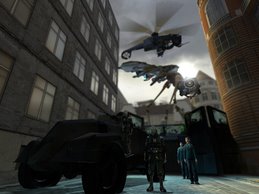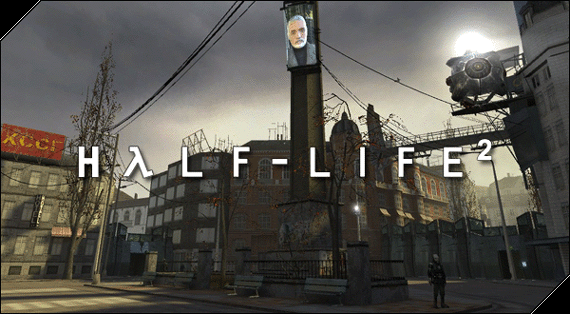Its official, my maths stink! Scored horribly for two tests. I'm not gonna delve into details. The bright side is that I make the mistakes now and not during the upcoming Ca1. I hate exams.
Its been a horrible week for Leon. He got punished like every day larhs, poor poor leon.
Btw, I just noticed I had subscribed to Animax on digital cable. Been watching the shows. The bad part about most anime is that it's a really tight series and If I miss one episode I'm missing alot. My favourites so far are "Black Jack", Candidates for Goddess"(ended) and "Galaxy Railroad" All of them are quite easy to watch and doesn't have that many complex storylines. I wish I found this channel earlier.
Moving on, I downloaded two game demos, Darwinia and DEFCON off steam. DEFCON is the best out of the two. DEFCON is a streamlined RTS with no resource collection or unit development. You just place your units and start a thermonuclear war. Here are the basics(off wiki of course): [edit] Overview
In DEFCON, players are given a dehumanised 1980s vector graphics computer-themed world map, a varied arsenal of nuclear weapons, and a primary objective: destroy as many of the enemy's population as possible. A typical game will see "innocent" casualties numbering in hundreds of millions (megadeaths) while players try their hand at annihilating their opponents. Attacking is a very risky strategy that leaves oneself wide open to attack.
In most games, all sides take heavy losses, but the player with the highest score wins. Players' scores are determined according to one of three schemes: Default (gain 2 points for 1 Megadeath caused, lose 1 point for 1 Megadeath suffered), Survivor (gain 1 point per million survivors in your territory) or Genocide (gain 1 point for each Megadeath caused); though functionally identical in a one-on-one conflict, each scoring scheme suggests subtle differences in strategy in larger multiplayer conflicts.
Gameplay time can be varied by configuring the speed at which events progress from real-time to 20× real-time. Most games last 30 to 40 minutes while real-time gameplay can last more than 8 hours.
The game offers six territories that may be selected by a player or assigned to an AI opponent. These include:
North America: Includes all of the contiguous United States, Canada, and Alaska.
South America: Includes Mexico, Central America, and all of South America.
Europe: Includes all of Europe except Russia and Turkey.
Africa: Includes all of Africa.
USSR: Includes all of contiguous Russia.
Asia: Includes all Asian countries except for Kazakhstan, Mongolia, Russia and the south-east Asian islands.
Territories that cannot be selected or that would normally be part of the above six, but aren't, include: Australia, Greenland, Oceania, Turkey, Kazakhstan, Mongolia, Cuba, Puerto Rico, the Caribbean, and the south-east Asian islands.
DEFCON is a streamlined RTS, with no unit production, resource collection, or technology tree upgrades. Players choose and position their forces at the beginning of the game. A countdown system prevents games from disintegrating prematurely. Gameplay begins at alert level DEFCON 5 and counts down to DEFCON 1 (the highest alert level). Each upgrade in alert level brings more possibilities, ensuring that issuing orders fastest will provide as little advantage as possible.
Once DEFCON 1 is reached, the game proceeds until a certain percentage (80% by default) of the total number of nuclear missiles available to all players have been launched or destroyed. Once this occurs, a victory countdown begins (45 game "minutes" by default) and the final score is announced when this countdown runs out.
A DEFCON game can host up to six human or AI players. Alliances can be formed, broken, or renegotiated at will with human players. Alliances with CPU controlled players can only be set at the start of the game. Allied players share radar coverage and line of sight, but there is no allied victory and there is only one winner. This means that almost all alliances are broken by the end of the game. Lead designer Chris Delay explains:
“We've seen alliance members shooting overhead friendly planes down because they believed the planes were scouting the area for targets in preparation for a strike. This results in arguments in the chat channels, followed by skirmishes at sea, followed by retaliation, before finally the whole alliance collapses and everyone starts nuking the hell out of each other. It's awesome.”
The chat system features a public channel, in which all players may communicate, as well as channels private to specific alliances, and direct player-to-player private messaging.
In a game with the Diplomacy option, all players start as members of a single alliance, and attempt to stay on top as the alliance disintegrates. Score is determined by survivors at the end of the game.
In Office mode, the game runs in real time and cannot be sped up. The game can be quickly forced to the background making the computer available for another use, or simply to make it appear the gamer is actually working. While the game continues to run in the background, a system tray icon will notify the gamer of certain events as they occur. The office mode hotkey, sometimes referred to as the boss key, is activated by striking the escape key twice in rapid succession. A game in office mode lasts no more than six hours. In fact, the boss key is available in all game modes, but it is designed for this mode in particular.
DEFCON uses a real-time line of sight system common to traditional RTS games, where only enemy units within radar coverage may be seen. However, a nuclear missile launch from a silo or submarine is automatically detected by all players (though the missile itself is not, and must be detected by radar), which reveals the location of the unit launching the missile. A nuclear missile launch from a bomber, however, does not reveal the location of the bomber.
Most units have several operating modes for different functions, and require several minutes to switch modes. For instance, ordering a missile silo to switch from offensive launches to missile defense will leave it inoperative while it switches.
Ground units
Ground installations are immobile, and can be destroyed by nuclear attack.
Radar dishes provide broad radar coverage (though most units have some radar capability), but they are destroyed by a single nuke. Often they are among the first targets, because they enhance other defense installations; for instance, a missile silo's firing range far outstrips its radar range. A radar dish can be destroyed if a fighter or bomber runs out of fuel or is shot down directly over it, even before DEFCON 1.
Missile silos have two modes: launching nuclear attacks or shooting down incoming missiles and planes. In the attack mode, a silo has ten ICBMs that may be fired at any target in the world, though doing so alerts all players and reveals the silo's position. On defense, a silo automatically fires anti-air missiles effective against enemy planes and missiles – however, the limited rate of fire means the silos may be overwhelmed by many incoming missiles. Unlike most units, silos are hardened against nuclear strikes, taking three hits to destroy, although each strike eliminates half (rounded down) of the silo's nuke stockpile.
Airbases house bombers and fighters (starting with five of each) plus a complement of five spare SRBMs to reload bombers that have launched their missile. They launch planes and provide a landing point for orphaned aircraft, and also build new fighters automatically throughout the game. Airbases take two hits to destroy; on the first hit, half of the airbase's currently landed aircraft and missiles are destroyed.
Ships
Naval units are organized into fleets of up to six ships which move and fight together. Fleets must be placed in territorial waters at the beginning of a game. Ships may move through the ocean, albeit slowly.
Carriers act as mobile airfields, scrambling fighters and nuke-equipped bombers. They are also the most powerful anti-submarine warfare escorts, armed with sonar and depth charges that quickly sink nearby subs. With no surface guns, they are helpless without their complement of planes.
Battleships are tough and carry powerful guns effective against surface fleets and aircraft. They are vulnerable to sub and bomber attacks, so are safer with carrier escorts.
Submarines carry torpedoes and an arsenal of five nukes. Sub attacks are dangerous against enemy ships, though subs are easily killed by carriers. Subs are invisible to radar but carry no radar of their own; they may use active sonar at the risk of exposing their position. Their real power comes from their missiles, which can devastate coastal cities, or quickly hit defenses before a full-scale strike. Subs must surface to fire nukes, leaving them open to counterattack before they can fire all their missiles; the launch also alerts all players to the sub's location.
Aircraft
Aircraft are launched from other ground and sea units. Typically they operate autonomously after launch, but bombers and fighters can also be controlled while airborne.
Fighters are light and fast, making them good at reconnaissance and interception. They are most effective against other aircraft, though they can attack ships as well. They have a fairly short range, forcing them to return to a base or crash for lack of fuel.
Bombers carry a single SRBM missile that may be fired at a nearby target. Bombers have a long range to deliver this payload, but are vulnerable during the trip. Unlike silo- and sub-based nukes, firing the missile does not alert everyone to the launch, making it a stealthier option. They also have a conventional attack that does heavy damage to ships.
Missiles deliver a devastating payload. A direct hit on a city will kill half of the current living civilians. Missiles can only be shot down by enemy silos in defense mode – several hits will cause them to crash harmlessly. Once launched from a silo, sub, or bomber, missiles cannot be retargeted, though they can be disarmed in mid-flight.
Its a really cool game but I'm not very good at it. I suffered a crushing defeat last time. score:-45. Well I'm still a newbie. I think my stratergies are too offensive.
Oh yeah, I also launched a new MV. Deviating away from my normal Halo themes, I made a World War 2 themed MV. Clips were from computer games Red Orchestra and Day of Defeat.
URL:http://www.youtube.com/watch?v=fKk12BHAtCw
watch my Halo movies too!
Well, I guess thats all.
Thursday, February 15, 2007
Subscribe to:
Post Comments (Atom)







No comments:
Post a Comment